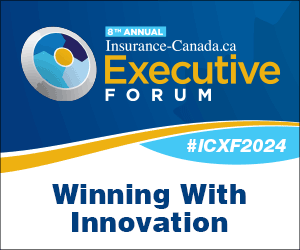The view of the Internet of Things (IoT) from the present moment is overwhelming for most mortals (present company included). That said, we believe that insurance practitioners need to squint hard and try to get some things in focus. A recent research brief from SMA – Strategy Meets Action provides one lens we can use.
It seems there are many more questions than answers about the impact of the IoT on insurable interests, on potential services and products, and on existing insurance technology. Suffice it to say, there is no shortage of risk (some being existential) to consider. We’d like your thoughts.
What is the IoT and why should I care?
The brief, “The Internet of Things: Creating a Connected World”, authored by SMA Partner Denise Garth, provides good context for discussion. The report notes that the emergence of the IoT is happening quickly and is enabled by four converging forces: affordable, usable technology powering the sensors, cloud infrastructure allowing storage of massive amounts of data, mobile communications enabling ubiquitous connectivity, and analytics technology to consume and digest big data.
Citing some mind stretching stats (e.g., by 2020, there will be 50 billion connected things compared with 8 billion people), the report summarizes the risk of taking a limited view of the potential:
IoT creates a world where nearly anything can be connected and communicated, creating new information, insights, and intelligence to be used in new and innovative ways…. Companies focused on using IoT only in various or isolated parts of the existing insurance value chain will miss one of their biggest opportunities to re-envision and reimagine the business of insurance – and put their companies at risk competitively and financially.
It’s this last bit – changing the business of insurance – that is the core, and most challenging part of the report.
Ubiquitous data gathering
The brief provides a number of examples of sensors now in use that are impacting commercial risk profiles. For example, sensors in farmers fields collecting data on irrigation, weather, soil composition, etc., which can be analyzed to help improve productivity, or mitigate risk. Also, sensors in hospitals are monitoring the location of critical equipment (crash carts) and behaviour (hand washing); helping to lower risk and provide information in the case of claims.
On the personal side , the report provides a number of examples of useful, and frequently wearable devices that help monitor conditions in homes and on peoples’ bodies and supply underwriting and risk management information as by-products.
Progress: The two edged sword
There are positive and negative impacts for insurers. The ability to monitor virtually everything from buildings, equipment, and the environment, to behaviour of individuals, provides data for risk management, underwriting, and claims. However, this assumes there are tools and expertise to do the analysis and store results.
More significantly, the improvement in risk management combined with more sophisticated selection and more precise pricing methods could put additional pressure on prices generally and challenge basics assumptions inherent in spread of risk. SMA’s call to action recommends that insurers be prepared to develop new products and services that focuses more on risk prevention than risk financing
That may be a little difficult to do and very difficult to do profitably, at least within the current business model. And that is the final statement in the report: “Change is coming, bringing with it a connected world of everything. We either define the change, or it will be defined for us.”
And, when you have digested that, the core systems need some help …
The brief has a few references to applications technology generally and core systems specifically. We were curious, and asked Ms. Garth whether current generation admin systems (policy, claims, billing) were capable of managing the data.
Her email answer should put IT managers on notice: “Not in their present form. The demands and characteristics of IoT, such as the constant connectedness, the volume and velocity of the incoming data, and the necessary embedded software and analytics, will require new platforms and applications to leverage the sensors and devices effectively.”
Her recommendation was to bring in new applications for the management and analysis of these new data and ensure the core systems can manage summarized information.
What do you think?
Our brains hurt. We need your help here. Are you looking at the IoT with an insurance eye? In your mind, is it a threat, an opportunity or both? What are you doing now?
Put your sensors on and let us know.



